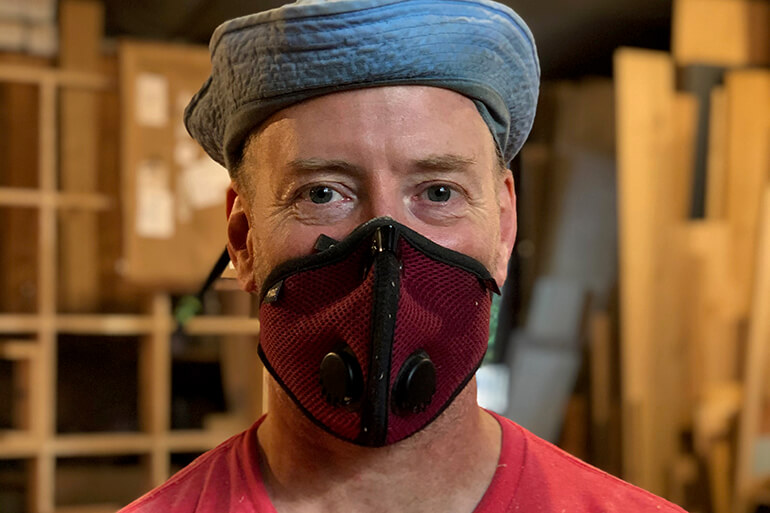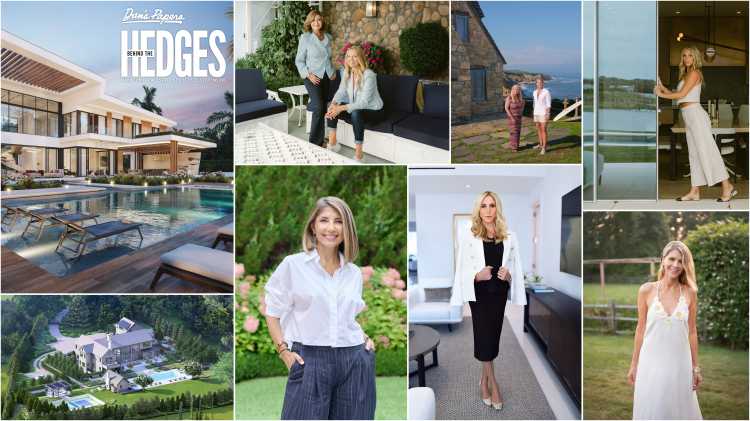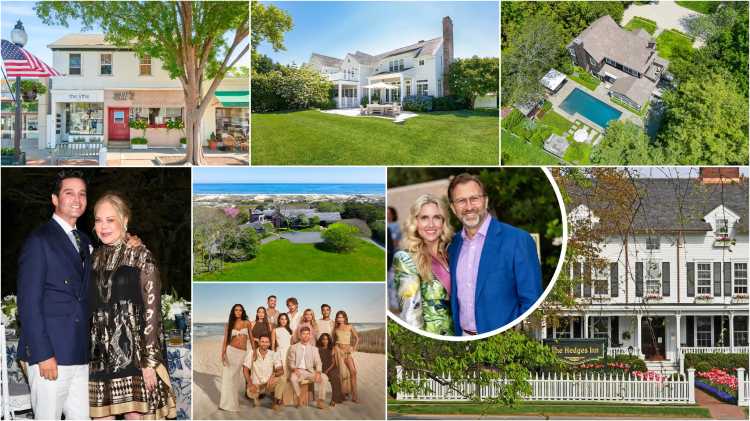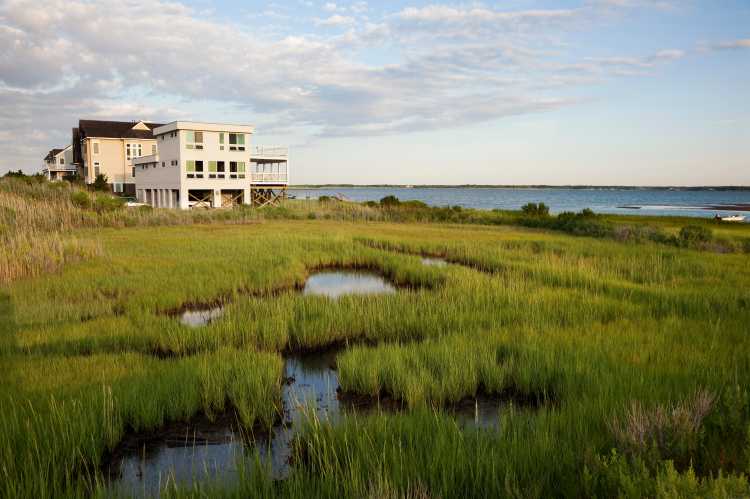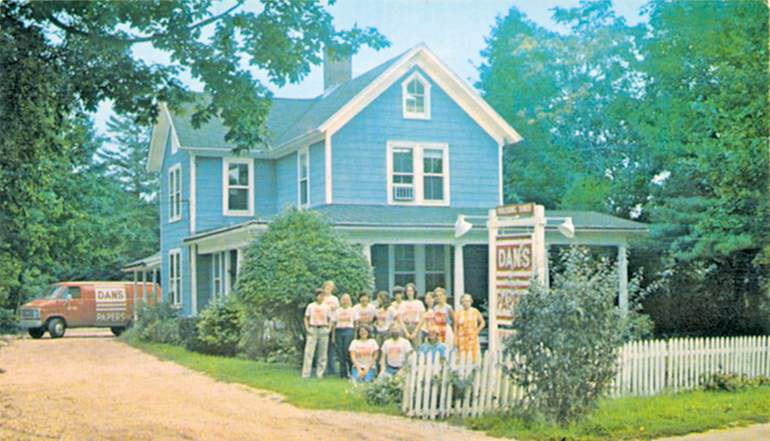Art and fabrication are often seen as opposite ends of the design spectrum–the former can be used to evoke emotion, introspection, inspiration, reflection, rebellion, communion, while the latter is created to serve a more practical function. Not so for the design work of East End maker Erling Hope, which transcends these limiting labels and exists in a state of duality as both art and fabrication.
Hailing from a long line of millwrights, boatbuilders, artisans and artists, Hope spent his teenage years on the restaurant track until the man who would become a mentor of sorts, John dePoo, introduced him to the building trades. He developed his fabrication skills through practice, determination and asking a lot of questions.
Having lived just south of Sag Harbor for two decades, Hope considers himself a tourist trapped in a local’s body. “It’s about keeping a sense of amazement, of wonder, while also being intimate with the world, with your surroundings, with materials, with the people you know and love. So it was intended as a putdown [from my then-teenage daughter], but I take it as something to aspire to.”
That intimacy with the world and materials has extended to Hope’s sustainable practices and sourcing, and he is dedicated to maintaining one of the greenest fabricators at any scale. In his eyes, to strive for less is to undercut the value of one’s work. “There is no such thing as good design that does not take into account the responsible use of limited resources and the treatment of the human beings who made those materials available. Sustainability isn’t just about stewarding stuff, it’s about making this whole human project workable. Craftsmanship isn’t just about building a table that will last, it’s also about building a society that won’t implode under the weight of its own corruption,” he says, noting that he sources wood from Forest Stewardship Council-certified suppliers and uses Greenguard-certified water-based finishes.
In addition to sourcing methods, he also saves leftover offcuts for future projects; heats his facility with scrap, harvested wind-fall wood and 95% efficient natural gas radiant heat; and his only contribution to the carbon footprint is a small amount of gas for his chainsaw. “When you have kids, you kind of forfeit the easy options of despair, apathy and narcissism. What we’re doing to this planet is criminal, and we will be judged by later generations,” he warns.
Hope’s immense range of design work includes–chairs, chests, beds, desks, Bluetooth speakers, memorial gardens, kitchen remodels, sculptures, paintings, liturgical furnishings and more. “I take undifferentiated materials and turn them into distinct and, I hope, distinctive objects and environments. Design and fabrication, and even that practice we call art–they’re all bound together,” he says. “I can’t build something unless I can see, and I can’t see it until I can draw it. I try not to be too far from paper and pencil… There is something magical about the process of stewarding an idea from the initial, tentative stage of concept through scribbles and sketches.”
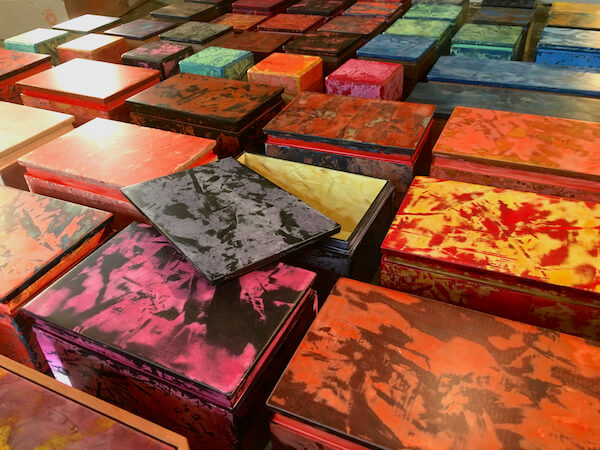
Unlike most run-of-the-mill furniture companies, Hope’s design inspirations are an exploration of today’s society and politics, religion and activism. “It’s the job of the artist to take wildly disparate ideas and phenomena and combine them into novel and compelling arrangements–to show that everything has a place here, everything is in conversation and counterbalance with the other parts,” he says. However, when working with a client, his focus shifts to fully encapsulating their taste and aesthetic in a one-of-a-kind design. “People are so complicated, and tastes are so variable. It’s always absolutely important to get a sense of the client… And our aesthetic sense is far more fundamental to who we are and how we navigate the world than we suppose,” Hope says. “If a client is willing to participate in the process, to wake up just a little to the built environment around them, to take note of what keeps them engaged, what details cut through the clutter and help make the world make sense just a little bit, and then share that, in a photo, on a Pinterest page, then I can start to learn something about them. And I can start to put that into a design.”
For one particularly unique job, the client requested wreathed stairwell handrails, something that was out of Hope’s capabilities at the time, so he taught himself a skill that few possess today. “I took that job fully expecting to farm it out to any of the half-dozen stair shops I had known about from the decade previous. Wreathed rails are a very specific skillset and craft, and it turned out that none of these outfits did proper wreathed rails anymore,” he recalls. “I like to be a little in over my head, so I dove in. Man, the classic books on the subject are like Kabbalah–arcane mathematics, indecipherable treatises. It’s a very precise and unforgiving three-dimensional geometry you’re trying to execute and make look nice.”
Perhaps his greatest contribution to the fabrication industry is the invention of a new building material, Purkinje Board, a flexible, sustainable wood-based board available in a nearly infinite array of color combinations. “I had a slow spell one fall and started experimenting with an idea, generating samples. An architect came for a shop visit, spied one of these samples and asked to borrow it. When I couldn’t get it back, I knew I was on to something.”

